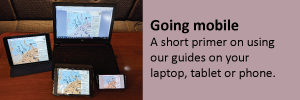Treasure in the Cordero Islands

We were in a hurry to get north as fast as we could, and made for an anchorage just north of Greene Point Rapids for the night, where we would not have to await a favourable tide in the morning to continue west. We know the anchorage well, tucked behind a tiny islet named “23 Metres” on charts.
However, the next day brought heavy fog and a forecast of unpleasant northwesterlies to Johnstone Strait for a few days. Our chosen anchorage sits at the eastern end of Chancellor Channel, and appears open to westerlies. We had never experienced more than a ripple on the water here, but that might have not been when a gale was howling in nearby Johnstone Strait.

So to be safe, we re-anchored south of the rapids in the shelter of the three Cordero Islets. There is also good shore access here for getting off the boat to explore while waiting for contrary winds to abate.
As we anchored, we were serenaded by the gasping sound of breathing from a pod of Orcas frolicking in the rapids on the other side of the islets. For the longest time they appeared to swim back and forth in the rapids, perhaps searching for food.

Only one other boat was anchored here when we arrived, a beautiful Pacific Seacraft Mariah named Cassiopeia. The crew, José and Montserat, came by for a visit and soon we were planning a pot-luck together. They are tour guides, specializing in hosting Spanish-speaking visitors to BC, but now they had a free summer to sail as their business was paused along with the rest of the world due to the pandemic. With no definite plans beyond getting to Port Hardy, and possibly going around the island, they were also waiting for the winds to die down.
We stretched our legs, exploring the drying channel between the north and south bays and later walking the shore along the mainland to an abandoned shack that is harder and harder to explore as vegetation chokes off the pathways more tightly with each visit.

A warm afternoon found me swimming off an inviting rock shelf on the far side of one of the islands. The crystal-clear green water was inviting and could not be ignored as we dinghied past, but my limbs stung painfully from the cold almost immediately. It was by far the coldest water I have ever jumped into. Captain Jim tested it with his toes, but that’s as close as he got.
At the opposite end of the islet are the “dinner rocks” which is a wonderful place to spend an afternoon with a blanket, a picnic and a good book. And the rising tide is warmed a bit by lovely flat rocks that are heated by the sun, making a quick swim here slightly less startling.
That evening we returned to the dinner rocks, joined around a bonfire by Jose and Montse, as well as by crew from another boat in the anchorage. Fortunately, there was no fire restriction in place as until then it had been a relatively damp summer.
Limpets lingered in the nooks and crannies of the rocks, and we harvested them by sneaking up and scraping them off with a knife before they tightened their grip. They sense when a threat is near and latch on, becoming difficult to pry off. We roasted them in the coals, using twigs as chopsticks to pick them up. They are a tasty one bite treat.
Second course was bannock, made by wrapping the dough around the end of a stick. When toasted to a lovely golden brown and removed from the stick, the hole that is left in the biscuit is perfect for filling with maple syrup, jam or peanut butter.

The next day our friends on Cassiopeia weighed anchor and headed to nearby Blind Channel Resort to celebrate their anniversary with a restaurant dinner, pick up a few provisions and catch up on laundry before returning the next day. We spent another day fishing from the dinghy, and reading in the cockpit amid the gentle white noise of the nearby rapids. Over sun-downers on their return, we decided with José and Montserat to round Cape Scott together.
Up early the next morning to transit the rapids at slack tide, the morning mist lifted and the sun came out. Looking back at the Cordero Islands and the lovely Cassiopeia astern, we knew we had just stolen a few carefree, delightful days in the company of new friends, temporarily escaping the cloud that Covid-19 had cast over our lives for the last months.
As often happens to us when cruising, sudden changes in plans that initially appear to foul things up, end up being the most treasured and memorable.
(The Cordero Islands are covered in Salish Sea Pilot’s Cruising Guide to Desolation Sound.)



















What a lovely description of your time in the Cordero Islands. I’ve passed through there but have never taken the time to anchor out. That’s going to change my next time in the area – and I’ll be using your guides for help. Any luck fishing from the dinghy?
Lots of fun and fishing from the dinghy, Mary, but if memory serves, the catch left lots to be desired.